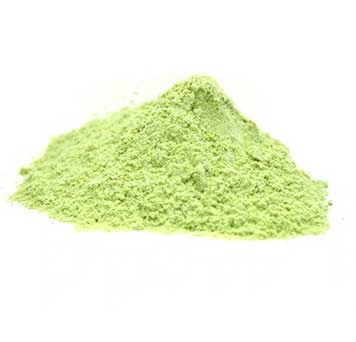
Natural Ingredients to Extend Freshness in Baked Goods for Healthier Choices
Natural Preservatives for Baked Goods Extending Freshness Naturally
In recent years, there has been a noticeable shift in consumer behavior towards healthier and more sustainable food options. One area that has garnered significant attention is the preservation of baked goods. Traditionally, many baked products benefitted from synthetic preservatives, which helped extend their shelf life but often raised concerns regarding their potential health impacts. As consumers become more health-conscious, the demand for natural preservatives in baked goods is increasing. This article explores various natural preservatives, their benefits, and how they can be effectively utilized to keep baked products fresh without compromising health.
Understanding Natural Preservatives
Natural preservatives are substances derived from natural sources that can help inhibit the growth of microorganisms, thus prolonging the shelf life of food products. Unlike synthetic preservatives, which may contain harmful chemicals, natural alternatives offer a safer choice for consumers. Common examples of natural preservatives include salt, sugar, vinegar, citrus juice, honey, and certain plant extracts.
Benefits of Using Natural Preservatives
1. Healthier Options Natural preservatives can enhance the nutritional profile of baked goods. For instance, using honey not only acts as a preservative but also adds beneficial enzymes and nutrients. Consumers appreciate products that align with their health goals, making natural preservatives a desirable alternative.
2. Clean Label Appeal In today's market, a clean label – which indicates that products have minimal and recognizable ingredients – is essential. Natural preservatives contribute to this trend, allowing bakers to market their goods more effectively and attractively.
3. Less Risk of Allergens Many natural preservatives do not have the same allergenic potential as some synthetic alternatives, making baked goods safer for individuals with specific dietary restrictions.
4. Enhanced Flavor and Texture Natural preservatives often offer added flavor profiles and can enhance the overall sensory experience of baked goods. For example, cinnamon not only acts as a natural preservative but also adds a warm, inviting flavor that many consumers enjoy.
Examples of Natural Preservatives for Baked Goods
1. Honey Famous for its antimicrobial properties, honey can effectively extend the shelf life of baked goods. Its low moisture content and acidic pH inhibit the growth of bacteria and molds.
2. Citrus Juices The acidity in lemon or lime juice can prevent microbial growth. These juices are often used in recipes for cakes and cookies to provide both flavor and preservation.
natural preservatives for baked goods

3. Vinegar Commonly used in many baked goods, vinegar (especially apple cider vinegar) can act as a natural preservative due to its high acidity, which combats spoilage organisms.
4. Salt A classic preservative, salt not only enhances flavor but also draws moisture out of food, creating an environment less favorable for microbial growth.
5. Sugar Sugar has excellent preservative qualities, particularly in high concentrations. It binds water molecules, making them unavailable for microbial growth, which is why sugar is frequently used in jams and fruit fillings.
6. Spices Certain spices like cinnamon, cloves, and nutmeg possess antimicrobial properties that can help extend the shelf life of baked products while adding unique flavors.
Implementing Natural Preservatives in Baking
When integrating natural preservatives into baked goods, it's essential for bakers to balance functionality with taste. Here are some tips for effectively using natural preservatives
- Experiment with Ratios Finding the right quantity of natural preservatives can be trial and error. Start with small amounts and gradually adjust based on taste and preservation needs.
- Combine Approaches Using a combination of natural preservatives can enhance effectiveness. For example, combining honey with vinegar can provide both moisture and acidity, improving product stability.
- Monitor Storage Conditions Even natural preservatives require proper storage conditions to be effective. Keep baked goods in cool, dry places and use airtight containers to minimize moisture exposure.
Conclusion
As consumer demand for healthier, more natural food products grows, the importance of utilizing natural preservatives in baked goods cannot be overstated. They not only enhance shelf life but also serve as avenues for adding flavor, improving nutritional value, and appealing to the growing clean-label movement. By understanding the various options available and applying them thoughtfully, bakers can meet consumer expectations while maintaining the quality and safety of their delicious creations. Embracing natural preservatives is not merely a trend, but a necessary evolution in the world of baking that benefits both makers and consumers alike.
-
Sodium Dichloroisocyanurate Safety Handling ProtocolsNewsJul.29,2025
-
Mining Chemicals for Copper Extraction Processes GuideNewsJul.29,2025
-
Fertilizer for Sale Shipping and Storage TipsNewsJul.29,2025
-
Dimethyl Disulfide as Sulfurizing AgentNewsJul.29,2025
-
Benzotriazole Safety Data Handling and Storage GuidelinesNewsJul.29,2025
-
Ammonium Bicarbonate Safety Handling Storage GuidelinesNewsJul.29,2025
-
The Transformative Role Of Trichloroisocyanuric Acid in Water TreatmentNewsJul.23,2025
Hebei Tenger Chemical Technology Co., Ltd. focuses on the chemical industry and is committed to the export service of chemical raw materials.
-

view more DiethanolisopropanolamineIn the ever-growing field of chemical solutions, diethanolisopropanolamine (DEIPA) stands out as a versatile and important compound. Due to its unique chemical structure and properties, DEIPA is of interest to various industries including construction, personal care, and agriculture. -

view more TriisopropanolamineTriisopropanolamine (TIPA) alkanol amine substance, is a kind of alcohol amine compound with amino and alcohol hydroxyl, and because of its molecules contains both amino and hydroxyl. -

view more Tetramethyl Thiuram DisulfideTetramethyl thiuram disulfide, also known as TMTD, is a white to light-yellow powder with a distinct sulfur-like odor. It is soluble in organic solvents such as benzene, acetone, and ethyl acetate, making it highly versatile for use in different formulations. TMTD is known for its excellent vulcanization acceleration properties, which makes it a key ingredient in the production of rubber products. Additionally, it acts as an effective fungicide and bactericide, making it valuable in agricultural applications. Its high purity and stability ensure consistent performance, making it a preferred choice for manufacturers across various industries.











